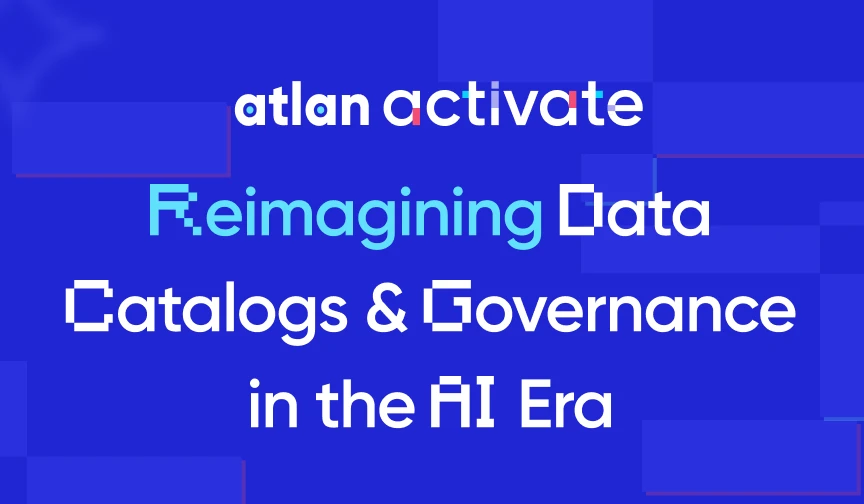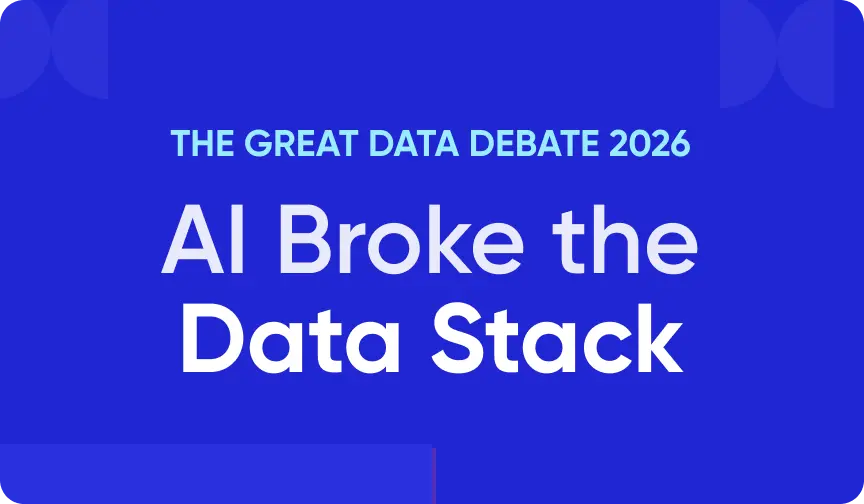Overlapping Compliance in Banking: What’s the Way Forward?

Last Updated on: April 10th, 2025 | 10 min read
Unlock Your Data's Potential With Atlan

Overlapping compliance requirements in banking arise when banks operating across multiple jurisdictions comply with different regulatory frameworks, which often impose similar or even conflicting obligations.
Without a unified control plane to oversee data governance across your data estate, compliance can become messy, and a bottleneck. It can slow down innovation, increase costs, add complexity, and increase operational costs.
In this article, we’ll explore the nature of overlapping compliance requirements and the challenges they pose. We’ll also see how a unified control plane simplifies compliance management, and how banks can leverage it to turn compliance into a competitive advantage.
Table of Contents
Permalink to “Table of Contents”- Overlapping compliance requirements in banking: An overview
- Understanding key regulatory frameworks in banking
- Overlapping compliance requirements in banking: Emerging trends shaping data compliance management
- Overlapping compliance requirements in banking: Top challenges
- Overlapping compliance requirements in banking: How a unified control plane for data and AI can help
- Wrapping up
- FAQs about overlapping Compliance Requirements in Banking
Overlapping compliance requirements in banking: An overview
Permalink to “Overlapping compliance requirements in banking: An overview”Overlapping compliance requirements in banking refer to multiple regulatory standards—often from different jurisdictions or authorities—that apply simultaneously to the same data, processes, or transactions.
Global banks face a maze of compliance rules that often overlap—from post-2008 financial reforms like Dodd-Frank and Basel III to modern data privacy laws like the EU GDPR, CCPA, India’s DPDPA and China’s PIPL.
Though these laws differ by region, they share goals: protect consumers, ensure transparency, and hold institutions accountable. However, navigating overlapping compliance requirements can create complexity, redundancies, and conflicting obligations, making it challenging for banks to streamline compliance efforts.
Mastercard’s case in India is a prime example, where the Reserve Bank of India (RBI) banned Mastercard from issuing new cards in 2021 due to non-compliance with the local data storage norms.
To understand the compliance landscape, let’s briefly look at the most important regulatory frameworks for banks globally.
Understanding key regulatory frameworks in banking
Permalink to “Understanding key regulatory frameworks in banking”The most significant regulations for banks include (but aren’t limited to):
- Dodd-Frank Wall Street Reform and Consumer Protection Act: Regulates financial institutions to maintain stability and protect consumers from risky practices.
- Basel III: Strengthens banking regulations by setting higher capital requirements, improving risk management, and ensuring banks have enough liquidity to handle economic downturns.
- BCBS 239: Focuses on risk data aggregation and reporting, requiring banks to collect, manage, and report risk-related data accurately to improve financial stability.
- GDPR: Enforces data protection and privacy within the EU.
- CCPA: Mandates businesses to offer California residents transparency into their data collection practices. It requires mechanisms for opting out of data sales, providing access to collected data, and ensuring secure processing.
- Gramm-Leach-Bliley Act (GLBA): Requires financial institutions to safeguard consumers’ nonpublic personal information through secure collection, sharing, and storage practices.
- Payment Card Industry Data Security Standard (PCI DSS): Sets security guidelines for businesses handling credit and debit card transactions, ensuring protection against fraud and data breaches.
- Anti-Money Laundering (AML): AML regulations require banks to monitor, detect, and report suspicious financial activities to prevent crimes like money laundering, terrorism financing, and fraud.
Overlapping compliance requirements in banking: Emerging trends shaping data compliance management
Permalink to “Overlapping compliance requirements in banking: Emerging trends shaping data compliance management”Two emerging trends that banks must focus on are:
- Tightening ESG (Environmental, Social, and Governance) regulations
- Rising regulations governing the use of AI
Tightening ESG (Environmental, Social, and Governance) regulations
Permalink to “Tightening ESG (Environmental, Social, and Governance) regulations”ESG in banking requires banks to disclose more detailed information on their sustainability efforts. This includes how they manage environmental risks, support social responsibility, and uphold ethical governance.
Various banks like JPMorgan Chase & Co., Bank of America, Wells Fargo have recently published reports to demonstrate their commitment to sustainability and responsible business practices.
But as ESG data becomes central to reporting, it intersects with data privacy laws. Banks must collect, store, and process this data responsibly, integrating ESG risk management with robust data protection practices. Regulators like the European Banking Authority (EBA) and European Central Bank (ECB) are setting clear expectations and issuing fines for non-compliance.
To stay ahead, banks should align ESG reporting with their data privacy strategy to reduce compliance risks.
Rising regulations governing the use of AI
Permalink to “Rising regulations governing the use of AI”While AI is transforming banking, it’s also triggering new compliance risks. As banks integrate AI, they must comply with emerging laws to ensure transparency, fairness, and security.
The EU’s proposed Artificial Intelligence Act aims to standardize AI governance, ensuring ethical use and accountability.
A key area of intersection between the AI Act and GDPR is with GDPR’s Article 22, which limits decisions made solely by automated systems. The AI Act’s Article 52 adds further requirements for transparency in AI interactions. So, banks must design AI systems that are effective, explainable and legally compliant.
An example of this challenge is predictive travel surveillance in the Netherlands. AI analyzes Passenger Name Records (PNR) to assess risks and flag potential threats, but this raises concerns about privacy, data accuracy, and bias.
This underscores the importance of aligning AI deployments to align with data protection laws to uphold individual rights and maintain public trust.
Overlapping compliance requirements in banking: Top challenges
Permalink to “Overlapping compliance requirements in banking: Top challenges”As mentioned earlier, navigating overlapping compliance requirements in banking is complex, and involves tackling challenges, such as:
- Regulatory uncertainty: The rise of AI, ESG, and cross-border data laws creates a fast-changing landscape, making it difficult for banks to stay current.
- Operational complexity: Multiple, sometimes conflicting, regulations from different authorities require coordination across departments, systems, and workflows.
- Redundant compliance efforts: Similar requirements across regulations often mean duplicate audits, assessments, and reports—draining time and resources.
- Cost overruns: Maintaining compliance with various frameworks drives up costs for staffing, legal counsel, audits, and technology investments.
- Legacy system constraints: Outdated IT infrastructure limits a bank’s ability to adapt quickly to new compliance standards, slowing down transformation efforts.
Overlapping compliance requirements in banking: How a unified control plane for data and AI can help
Permalink to “Overlapping compliance requirements in banking: How a unified control plane for data and AI can help”To navigate the growing complexity of overlapping regulations, banks need a smarter, more scalable approach to compliance—one that cuts redundancy, reduces costs, and improves agility. A unified control plane for data and AI does exactly that.
By centralizing governance, automating controls, and monitoring compliance in real time, it helps banks manage regulatory obligations across jurisdictions from a single platform. At the core of this approach is a metadata lakehouse, which consolidates policy enforcement, data discovery, and compliance reporting in one place.
In this approach, the unified control plane collects and manages metadata from all the data ecosystem components via their metadata layer and establishes two-way communication with all systems.
For banks grappling with overlapping compliance requirements, such a setup can support:
- Centralized policy enforcement: A unified control plane enables banks to define and enforce policies consistently across systems and regions. For example, Austin Capital Bank leveraged this approach to apply masking policies that limit access to sensitive customer data, ensuring compliance with multiple privacy regulations while maintaining data accessibility.
“As we thought about data governance more and more, it became clear I wanted a tool to handle that. You really need an interface built on top of Snowflake so that you can easily see who has access to what.” - Ian Bass, Head of Data & Analytics
- Automated governance controls: Embedding compliance into daily workflows can minimize manual oversight. Tide, a UK-based digital bank, used automated tagging to classify personally identifiable information (PII), reducing a 50-day manual compliance process to just hours, significantly improving GDPR compliance.
- Real-time compliance monitoring: Continuous monitoring ensures that potential violations are caught and addressed before they become liabilities. A unified control plane provides real-time alerts for non-compliance, allowing banks to detect and resolve regulatory violations before they escalate.
- End-to-end data lineage for audit readiness: Column-level data lineage provides transparency into how data moves and transforms across systems, simplifying compliance audits and ensuring traceability.
- Granular access controls for jurisdictional compliance: Regulations vary by region. A unified control plane supports role-based, geography-specific, and project-level permissions, ensuring only authorized users access sensitive data.
- Intelligent automation for operational efficiency: In a unified control plane, automated workflows handle repetitive compliance tasks like documentation, classification, and reporting. Porto, a Brazilian banking leader, used rule-based automation to manage over a million data assets, cutting manual workload by 40%.
- Automated audit trails and reports: In a unified control plane, every compliance action is logged automatically, providing a clear, regulator-ready audit trail—no more chasing down spreadsheets or manual logs.
Wrapping up
Permalink to “Wrapping up”As financial regulations grow more complex and fragmented, traditional, reactive compliance methods are no longer viable. Managing multiple audits, maintaining siloed reporting systems, and reconciling overlapping rules strain both resources and agility.
Additionally, as generative AI advances, it’s essential to ensure both structured and unstructured data is easily discoverable and reliable—in other words, truly AI-ready.
That’s where a unified control plane for data and AI can help. It can manage governance, compliance, and context across the board. This approach helps banks streamline operations, minimize risk, and stay ahead of regulatory change.
FAQs about overlapping compliance requirements in banking
Permalink to “FAQs about overlapping compliance requirements in banking”Why is overlapping compliance such a big issue in global banking today?
Permalink to “Why is overlapping compliance such a big issue in global banking today?”Overlapping compliance arises because banks operate across regions with different regulatory regimes each with unique data protection, risk, and reporting requirements. From GDPR in the EU to CCPA in the US and DPDPA in India, banks often face similar but slightly different compliance obligations. This redundancy leads to operational inefficiency, high costs, and regulatory uncertainty. A unified control plane that centralizes policy enforcement and reporting can help banks reduce duplication and simplify compliance.
How do banks deal with conflicting regulatory requirements, like GDPR vs. national data laws?
Permalink to “How do banks deal with conflicting regulatory requirements, like GDPR vs. national data laws?”Conflicting rules like GDPR’s data transfer allowances vs. China’s or India’s data localization mandates put banks in a tough spot. Banks are responding by deploying jurisdiction-aware controls and localized policy enforcement mechanisms. A unified control plane allows for these fine-grained, region-specific access policies to be applied from one platform, reducing the risk of non-compliance and maintaining operational agility.
What role do metadata and lineage play in ensuring audit-readiness across multiple frameworks?
Permalink to “What role do metadata and lineage play in ensuring audit-readiness across multiple frameworks?”Metadata management and data lineage are foundational for compliance audits. They help banks answer: Where did this data come from? Who accessed it? How was it used? Tools built on a metadata lakehouse give banks full visibility across systems, support automated audit trails, and ensure traceability key for frameworks like BCBS 239, PCI DSS, and GDPR. This traceability simplifies audits and strengthens regulator trust.
Are banks automating any part of compliance to reduce complexity and cost?
Permalink to “Are banks automating any part of compliance to reduce complexity and cost?”Absolutely. Forward-thinking banks are embedding automated governance into daily workflows. For instance, PII tagging, access controls, and reporting can now be handled through rule-based automation, cutting down manual overhead drastically. The UK’s Tide Bank reduced a 50-day GDPR compliance process to a few hours with automated data classification.
How can a bank ensure its AI systems remain compliant with evolving laws like the EU AI Act and GDPR?
Permalink to “How can a bank ensure its AI systems remain compliant with evolving laws like the EU AI Act and GDPR?”Banks must ensure AI systems are explainable, transparent, and privacy-aware. With GDPR’s Article 22 limiting automated decisions and the EU AI Act introducing AI-specific obligations, banks are embedding compliance into the AI pipeline itself. A unified control plane helps monitor data usage, enforce policy, and manage metadata across both structured and unstructured data ensuring compliance is built in, not bolted on.
Is ESG reporting now part of compliance? How does it affect data management?
Permalink to “Is ESG reporting now part of compliance? How does it affect data management?”Yes. ESG disclosures are now a regulatory priority, especially in Europe. But ESG data intersects with privacy regulations raising compliance stakes. Banks must collect and manage ESG metrics with the same rigor as financial data, integrating sustainability data into their broader data governance strategies. A unified control plane supports this by aligning ESG data collection with existing compliance frameworks, ensuring transparency and accountability.
Share this article
Atlan is the next-generation platform for data and AI governance. It is a control plane that stitches together a business's disparate data infrastructure, cataloging and enriching data with business context and security.
Overlapping compliance requirements in banking: Related reads
Permalink to “Overlapping compliance requirements in banking: Related reads”- Data Governance in Banking: Benefits, Challenges & Capabilities in 2025
- Data Governance and Compliance: Act of Checks & Balances
- Data Compliance management in banking: Your complete guide in 2025
- Data Compliance Management in Financial Services: Your Complete Guide in 2025
- Data Discovery in Banking: Get Business Value from Siloed Data
- BCBS 239 Compliance: What Banks Need to Know in 2025
- Unified Control Plane for Data: The Future of Data Cataloging





















